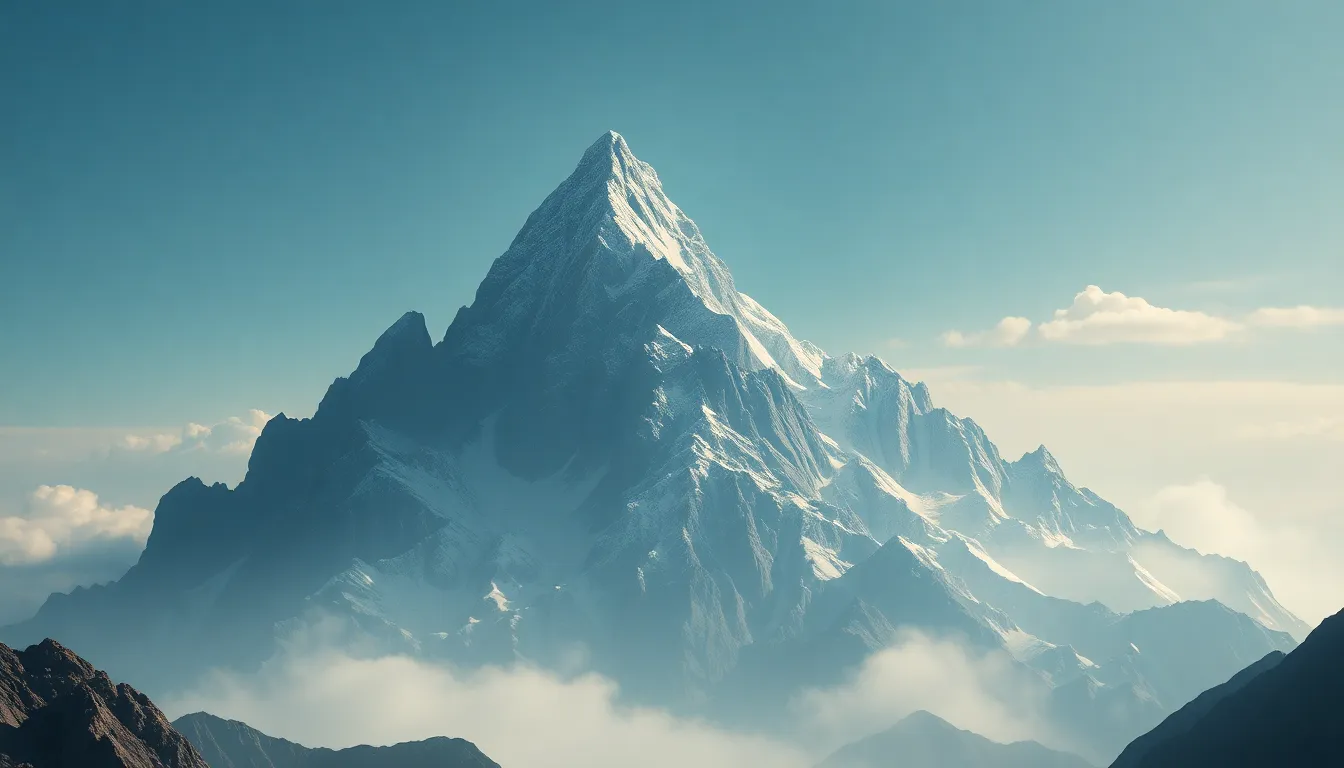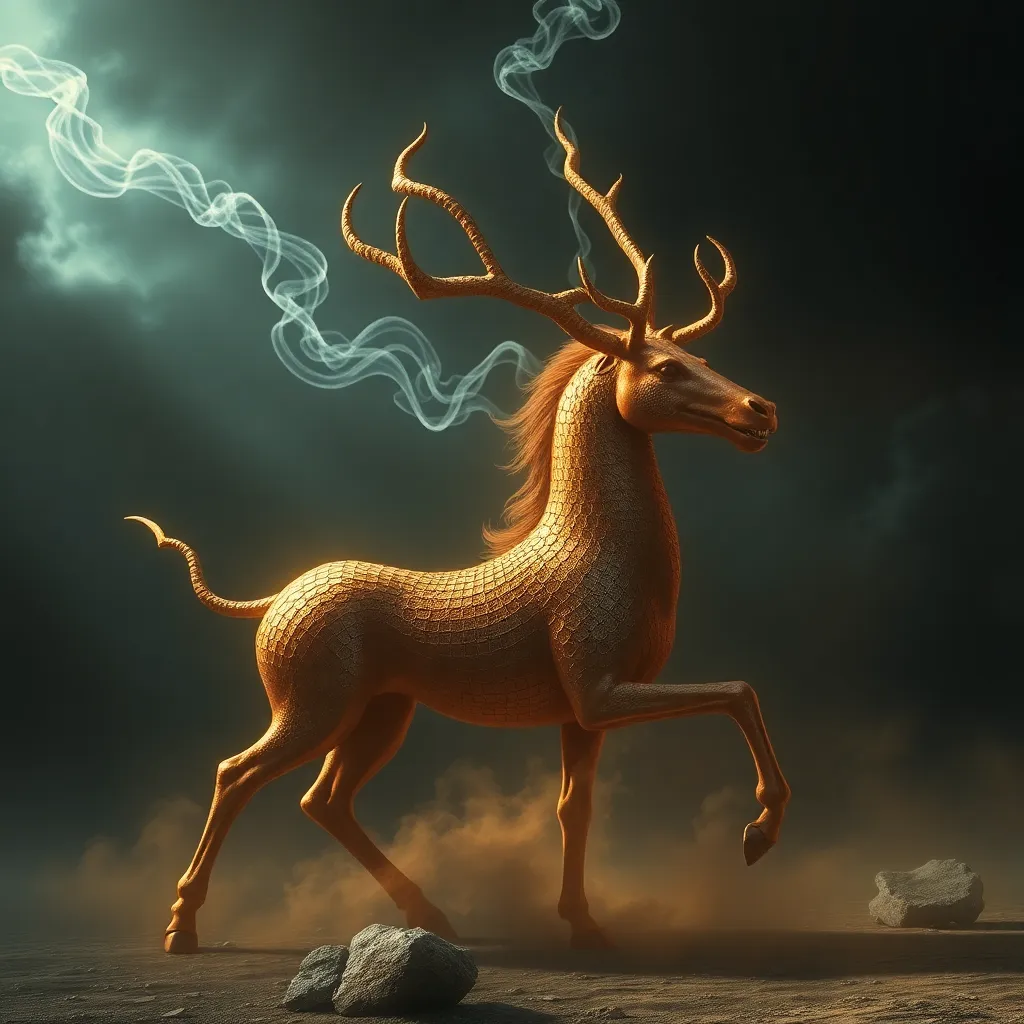The Mountain of Time: Myths Linking Peaks to Temporal Mysteries
I. Introduction
The concept of “The Mountain of Time” evokes a profound connection between the natural world and the passage of time. Mountains have long been revered by various cultures, often embodying both physical and metaphysical significance. They are not merely geological formations; they represent a bridge between the earthly realm and the divine, functioning as markers of time and space.
This article seeks to explore the intricate relationship between mountains and time, delving into myths and legends that connect these majestic peaks to temporal mysteries. From ancient civilizations to modern interpretations, the symbolism of mountains as timeless entities continues to fascinate and inspire.
II. The Significance of Mountains in Human Culture
Mountains have held sacred significance throughout human history, often viewed as the dwelling places of gods or as sites for spiritual enlightenment.
- Historical perspectives on mountains as sacred spaces: Many cultures regard mountains as sacred sites where the earthly realm meets the divine. For instance, the Himalayas are considered the abode of deities in Hinduism.
- Symbolism of elevation and proximity to the divine: The higher the altitude, the closer one is perceived to be to heaven. This belief has led to numerous religious pilgrimages to sacred peaks.
- The role of mountains in shaping human identity and spirituality: Mountains often serve as metaphors for personal challenges and spiritual journeys, influencing cultural narratives and individual identities.
III. Time as a Mythical Concept
Time is often depicted as a fluid and complex concept in mythology, contrasting sharply with its scientific understanding.
- Understanding the nature of time in mythology: Myths frequently personify time, portraying it as a deity or a cyclical process rather than a linear progression.
- Distinction between linear and cyclical time in various cultures: While Western traditions often view time linearly, many indigenous cultures embrace a cyclical understanding, where past, present, and future are interconnected.
- The intersection of space and time in mythological narratives: Mountains often serve as pivotal points where these two dimensions converge, acting as gateways to other realms or times.
IV. Notable Myths Involving Mountains and Time
Throughout history, various cultures have constructed myths that intertwine mountains with temporal mysteries.
- Mount Olympus: In Greek mythology, this peak is not just the home of the gods, but its elevation alters the perception of time among mortals, suggesting that divine beings exist outside of human constraints.
- Mount Meru: In Hindu cosmology, Mount Meru is considered the cosmic axis, symbolizing the center of the universe. It plays a crucial role in the cyclical nature of time, representing eternal cycles of creation and destruction.
- The Andes and the Incan concept of “Pachakuti”: This Andean philosophy views time as a transformational cycle, where periods of chaos and order alternate, often linked to the majestic peaks of the Andes.
V. Peaks and Temporal Anomalies in Folklore
Folklore is rich with tales that illustrate the mystical connections between mountains and time.
- The phenomenon of time slips: Certain mountains are alleged to be portals where individuals experience time slips, moments where they momentarily exist in different times or realities.
- Legends of time travel: Mystical peaks often feature in stories of time travel, where characters transcend their temporal boundaries through the power of the mountain.
- Stories of lost civilizations: Many mountain ranges are associated with tales of lost civilizations, suggesting that the ancient inhabitants inhabit a different temporal plane.
VI. Scientific Exploration of Time and Elevation
Modern science provides fascinating insights into the relationship between time and altitude.
- Overview of time dilation: According to Einstein’s theory of relativity, time moves slower in stronger gravitational fields, meaning that time perception changes with elevation.
- How altitude affects time perception: Studies have shown that individuals at higher altitudes might perceive time differently, often feeling a sense of timelessness.
- The relationship between geological features and temporal phenomena: Mountains not only shape the landscape but also influence human perceptions of time through their grandeur and permanence.
VII. Modern Interpretations and Cultural Representations
Contemporary culture continues to explore the connection between mountains and time through various forms of art and literature.
- The portrayal of mountains in contemporary literature and films: Many modern narratives feature mountains as symbols of both challenges and timeless wisdom, reflecting humanity’s ongoing fascination with these natural wonders.
- Art and visual representations: Artists depict mountains as eternal sentinels, often using them as metaphors for the passage of time and the endurance of nature.
- The influence of these myths on modern spiritual practices: Current spiritual movements often draw upon ancient mountain myths to create practices that connect individuals with the rhythms of nature and time.
VIII. The Role of Environmental Changes in Mythology
Environmental changes, such as climate change, significantly impact mountain-based myths and their relevance in today’s world.
- How climate change affects mountain myths: As glaciers retreat and ecosystems shift, traditional narratives may evolve to address new realities, challenging long-held beliefs.
- The evolving nature of time myths: Myths surrounding mountains are not static; they adapt in response to environmental shifts, reflecting humanity’s changing relationship with the earth.
- Case studies of specific mountains: Mountains like Kilimanjaro and the Himalayas are facing ecological challenges that directly influence the myths and stories associated with them.
IX. Personal Reflections and Experiences with Mountains and Time
Travelers and climbers often share transformative experiences that highlight their perceptions of time in mountainous regions.
- Anecdotes from travelers: Many recount feelings of timelessness or a profound connection to the universe when standing atop a peak, experiencing a moment where past, present, and future converge.
- The psychological impact of mountain experiences: Engaging with mountains can lead to deep introspection and a re-evaluation of one’s life, often resulting in a heightened awareness of the passage of time.
In conclusion, the myths linking mountains to temporal mysteries are woven into the fabric of human culture. They remind us of the profound connection between nature and time, inviting us to explore our own relationships with these timeless giants. As we continue to navigate the complexities of our modern world, the mountains stand as enduring symbols of both challenge and transcendence, forever shaping our understanding of time.



